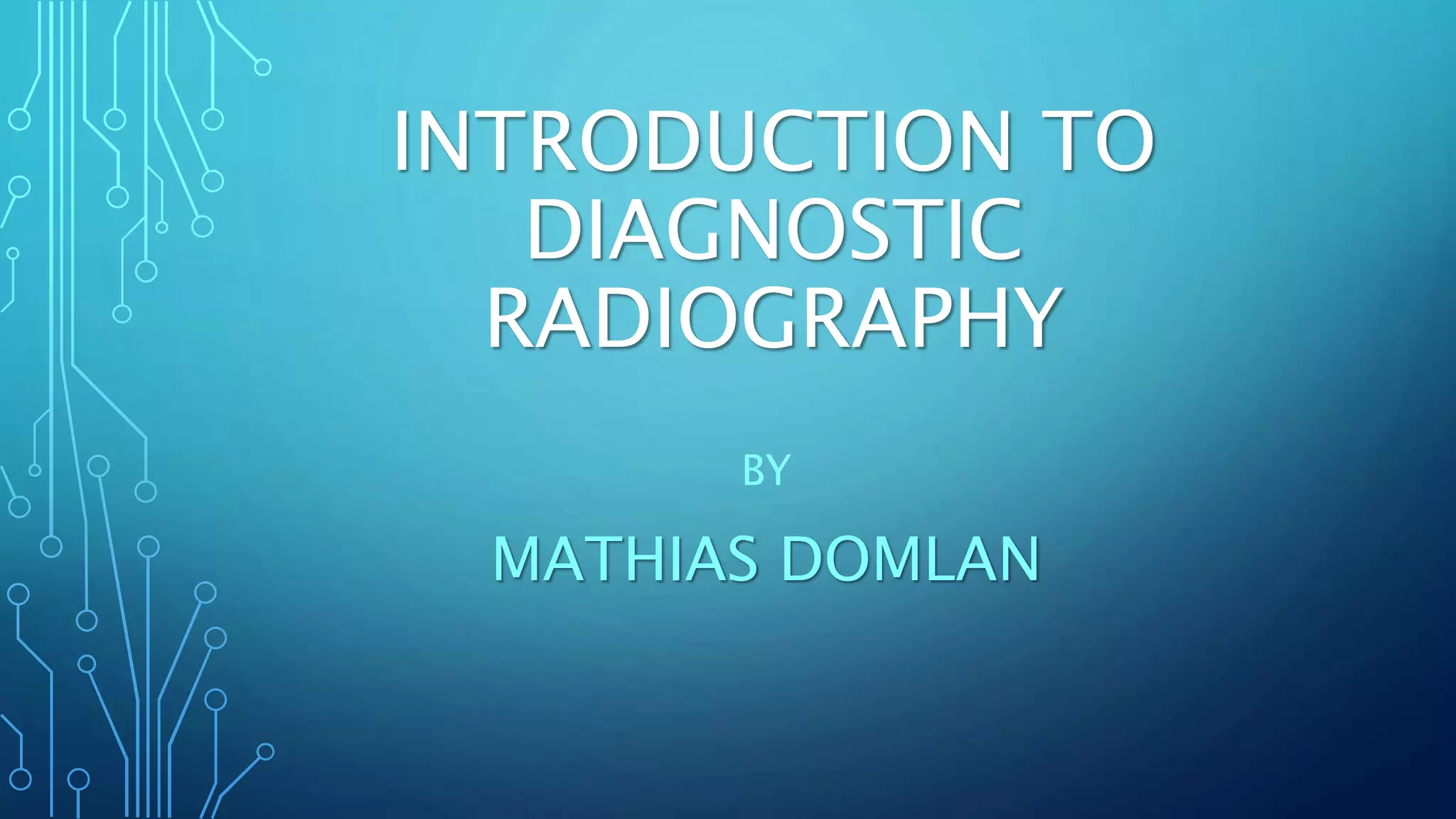This document provides an introduction to diagnostic radiography. It discusses what diagnostic radiography is, the early history of radiography dating back to Wilhelm Roentgen's discovery of x-rays in 1895. It then describes several common diagnostic imaging modalities used today including conventional x-ray, fluoroscopy, ultrasound, CT scanning, and MRI. Each modality is briefly explained in terms of its benefits, risks, and applications. The document concludes with a short section on the history and current state of diagnostic radiography in Ghana.



















